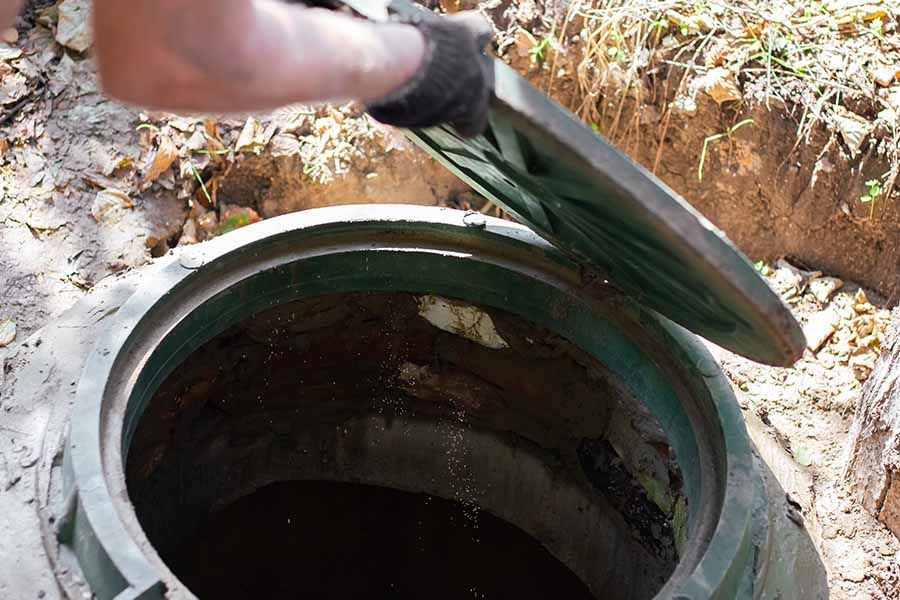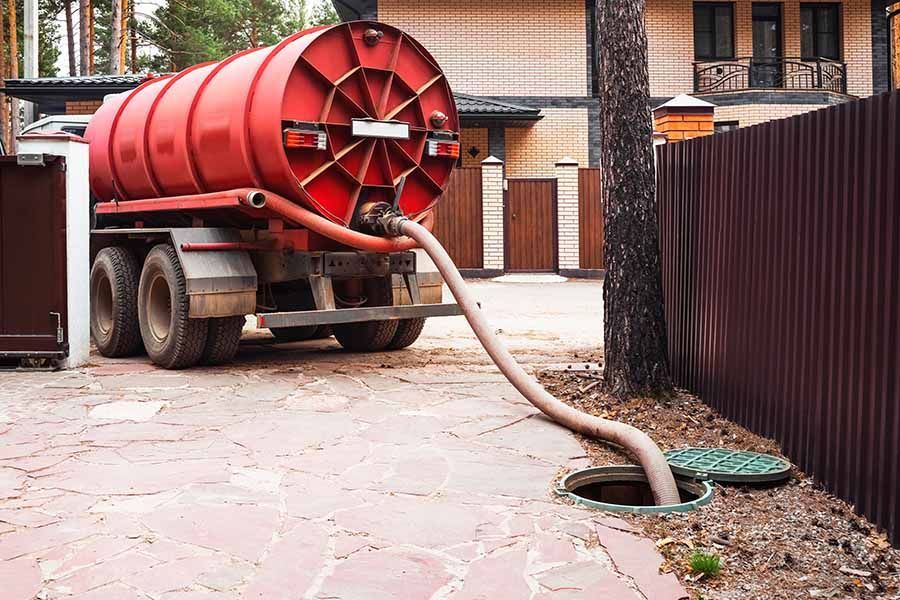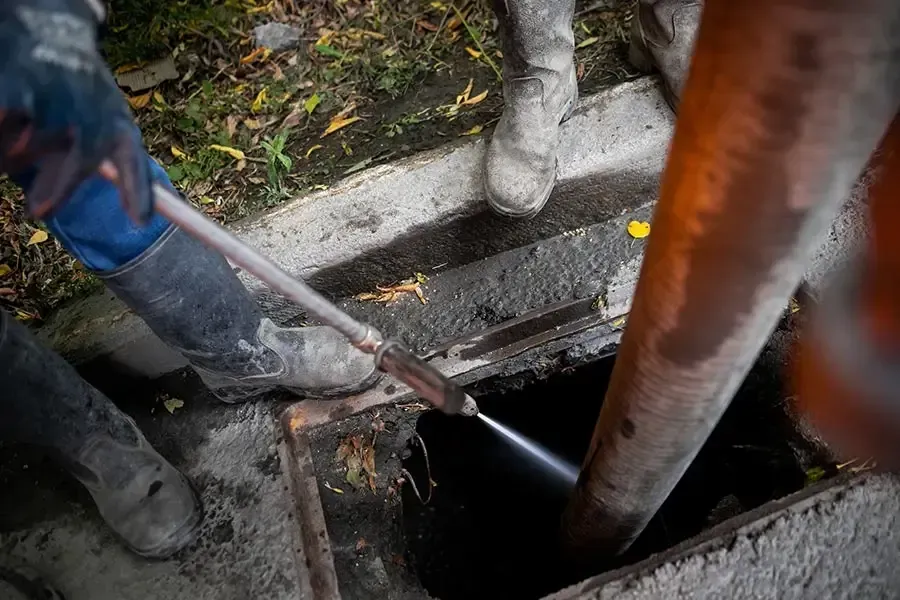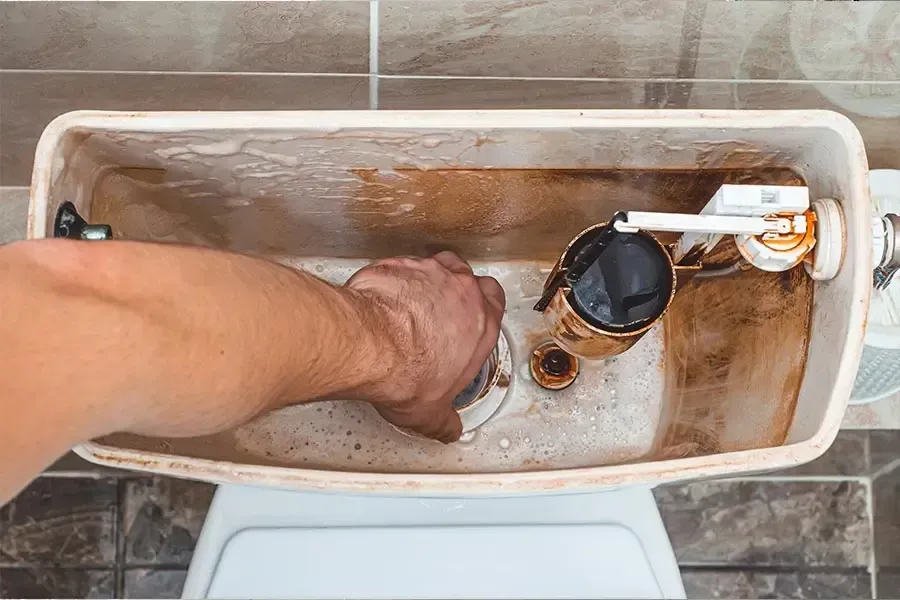Do you want to know more about grease trap services? Chat with King's Services' skilled plumbers right now, and let us answer all your questions.
If you currently own or operate a restaurant, you likely know about grease traps and what they do. If not, and you’re only just considering entering the food service industry, you’ll quickly learn about these helpful contraptions and their essential role in a commercial kitchen. But how does a grease trap work, and what does it do?
As an experienced grease trap maintenance provider, King’s Services is well-versed in the subject. Below, the team outlines some basic information about these mechanisms and what to do to effectively maintain your grease trap.
The Basics of Grease Traps
Most food service facilities have a grease trap located in the area where they prepare food. Grease traps collect fats, oils, and grease (FOG) before they can infiltrate the municipal sewage system.
If the FOG enters the shared plumbing system, it wreaks havoc on all commercial and residential plumbing in the area. That’s why health and safety inspectors cannot overstate the importance of using these traps as per the industry’s codes and best practices.
What Is a Grease Trap?
A grease trap is a large, box-shaped container made of durable rubber, metal, or a combination of those materials. Facilities that produce large amounts of food daily install grease traps outdoors. Movie theatres or facilities that cook small quantities might have a grease trap in the food preparation space instead.
How Does a Grease Trap Work?
The large box serves as a grease interception and containment appliance. As wastewater leaves the restaurant, it often contains food particles and FOG. The grease accumulation trap filters grease, oil, and solids out of this water.
Grease weighs less than water and floats. The solids sink to the bottom of the trap. So, when wastewater enters the trap, it should easily separate from the grease, oil, and food solids.
After this point, the water can drain through a separate portal before rerouting to a wastewater treatment facility. Grease traps simplify municipal sewer system maintenance. They also protect the facility owner from expensive fines.
If grease, oil, and food solids get into the wastewater pipes, they will quickly clog them up, which affects all nearby establishments.
Grease Trap Installation
If you plan to purchase an empty restaurant building, you probably can access its old grease trap. However, you should seek installation services under the following circumstances:
- You are building a food service establishment from the ground up
- You are converting a building previously purposed for a different industry
- Your new building contains an outdated plumbing system
Explore sustainable commercial kitchen plumbing fixtures if these situations apply to you so that you know how to narrow down your choices.
What Establishments Use Grease Traps?
Restaurants often come to mind when people think of grease traps. However, even establishments that don’t cook endless meal orders will have one, including the following:
- Movie theatres: How does a grease trap work in a movie theatre that only serves popcorn and prepackaged foods? Movie theatres that make fresh popcorn in the concession stand use lots of oil. Staff may also wash the kettle components in the sink while the excess oil goes into the grease trap.
- Coffee shops: You may be surprised that many coffee shops require grease traps. Even those that don’t serve food may need a grease trap for their espresso menu items.
- Schools: Most schools have a cafeteria where staff prepare lunches and breakfasts for the students. When cafeteria staff wash cookware and meal trays, a grease trap allows them to let the solids and oils drain into the sink without concern.
- Hospitals: Like schools, hospitals have cafeterias for serving patients, long-term visitors, and staff members.
- Sports arenas: Some sports arenas serve basic concession food while others cook elaborate menu items. Even a concession stand offering hot or cooked foods like burgers, hotdogs, and entrees will need a grease trap to manage oily or solid food waste.
A grease trap protects your plumbing system and municipal sewer lines from a greasy disaster.
Types of Grease Traps
You’ll encounter three grease trap models: manual, automatic, and gravity. Each model works differently but achieves the same goal of grease elimination and containment.
- A passive hydromechanical grease trap, or manual grease trap, is smaller and more compact. Establishments serving minimal amounts of food must still schedule a plumbing service to manually empty the grease trap.
- Automatic traps are also called automatic grease removal units. These models work similarly to manual ones but automatically heat and skim the oil and grease particles from the trap. They then transfer the skimmed material into a designated bin for pickup and recycling.
- Gravity traps are much larger and hold more material. Businesses typically install them in the ground. A plumbing specialist occasionally pumps the gravity trap’s contents, much like a septic tank.
Choosing an adequate grease trap for your food establishment largely depends on its size and the amount of food you cook and serve daily.
If you own a coffee shop, cinema, or facility serving prepared food, explore manual traps. However, full-service restaurants or high-service facilities benefit from automatic or gravity traps.
Do Grease Traps Require Maintenance?
Yes, grease traps require maintenance. Like other frequently used appliances, they collect debris and develop wear and tear. The most common maintenance service involves emptying and cleaning the grease trap. You should schedule draining and cleaning services every three months.
Service requirements may vary depending on the trap size and service volume. A good rule of thumb is to empty the trap when it is half full to prevent clogs and other plumbing catastrophes.
King’s Services Will Empty Your Business’s Grease Trap
How does a grease trap work? It collects food solids and FOG from your food establishment while allowing waste water to flow through. Professionals should be cleaning the grease trap multiple times a year, so don’t delay in scheduling a service.
Schedule your grease trap maintenance with King’s Services at
431-813-5843.












